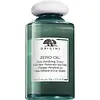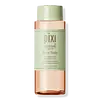What's inside
What's inside
 Key Ingredients
Key Ingredients

No key ingredients
 Benefits
Benefits

 Concerns
Concerns

 Ingredients Side-by-side
Ingredients Side-by-side

Water
Skin ConditioningSalvia Officinalis Leaf Water
MaskingAlcohol Denat.
AntimicrobialGlycerin
HumectantMentha Viridis Leaf Oil
AstringentCitrus Medica Peel Oil
Citrus Aurantium Dulcis Oil
MaskingLavandula Angustifolia Oil
MaskingViola Odorata Oil
MaskingCitral
PerfumingLinalool
PerfumingFarnesol
PerfumingBenzyl Benzoate
AntimicrobialBenzyl Salicylate
PerfumingLimonene
PerfumingSerenoa Serrulata Fruit Extract
Skin ConditioningLaminaria Saccharina Extract
Skin ProtectingSalicylic Acid
MaskingPoria Cocos Sclerotium Extract
AstringentAloe Barbadensis Leaf Juice
Skin ConditioningCentaurium Erythraea Extract
Skin ConditioningImpatiens Balsamina Leaf Extract
AstringentYeast Extract
Skin ConditioningPolysorbate 80
EmulsifyingTocotrienols
Skin ConditioningButylene Glycol
HumectantSodium Citrate
BufferingDisodium EDTA
Water, Salvia Officinalis Leaf Water, Alcohol Denat., Glycerin, Mentha Viridis Leaf Oil, Citrus Medica Peel Oil, Citrus Aurantium Dulcis Oil, Lavandula Angustifolia Oil, Viola Odorata Oil, Citral, Linalool, Farnesol, Benzyl Benzoate, Benzyl Salicylate, Limonene, Serenoa Serrulata Fruit Extract, Laminaria Saccharina Extract, Salicylic Acid, Poria Cocos Sclerotium Extract, Aloe Barbadensis Leaf Juice, Centaurium Erythraea Extract, Impatiens Balsamina Leaf Extract, Yeast Extract, Polysorbate 80, Tocotrienols, Butylene Glycol, Sodium Citrate, Disodium EDTA
Water
Skin ConditioningGlycolic Acid
BufferingSodium Hydroxide
BufferingButylene Glycol
HumectantGlycerin
HumectantAloe Barbadensis Leaf Juice
Skin ConditioningHamamelis Virginiana Water
AstringentAesculus Hippocastanum Seed Extract
Skin ConditioningHexylene Glycol
EmulsifyingFructose
HumectantGlucose
HumectantSucrose
HumectantUrea
BufferingDextrin
AbsorbentAlanine
MaskingGlutamic Acid
HumectantAspartic Acid
MaskingHexyl Nicotinate
EmollientPanax Ginseng Root Extract
EmollientEthylhexylglycerin
Skin ConditioningDisodium EDTA
Biotin
AntiseborrhoeicPanthenol
Skin ConditioningPPG-26-Buteth-26
Skin ConditioningPEG-40 Hydrogenated Castor Oil
EmulsifyingPhenoxyethanol
PreservativeParfum
MaskingCaramel
Cosmetic ColorantBenzyl Benzoate
AntimicrobialCitral
PerfumingCitronellol
PerfumingCoumarin
PerfumingGeraniol
PerfumingHexyl Cinnamal
PerfumingHydroxycitronellal
PerfumingLimonene
PerfumingLinalool
PerfumingCI 14700
Cosmetic ColorantWater, Glycolic Acid, Sodium Hydroxide, Butylene Glycol, Glycerin, Aloe Barbadensis Leaf Juice, Hamamelis Virginiana Water, Aesculus Hippocastanum Seed Extract, Hexylene Glycol, Fructose, Glucose, Sucrose, Urea, Dextrin, Alanine, Glutamic Acid, Aspartic Acid, Hexyl Nicotinate, Panax Ginseng Root Extract, Ethylhexylglycerin, Disodium EDTA, Biotin, Panthenol, PPG-26-Buteth-26, PEG-40 Hydrogenated Castor Oil, Phenoxyethanol, Parfum, Caramel, Benzyl Benzoate, Citral, Citronellol, Coumarin, Geraniol, Hexyl Cinnamal, Hydroxycitronellal, Limonene, Linalool, CI 14700
 Reviews
Reviews

Ingredients Explained
These ingredients are found in both products.
Ingredients higher up in an ingredient list are typically present in a larger amount.
Aloe Barbadensis Leaf Juice comes from leaves of the aloe plant. Aloe Barbadensis Leaf Juice is best known for helping to soothe sunburns. It is also anti-inflammatory, moisturizing, antiseptic, and can help heal wounds.
Aloe is packed with good stuff including Vitamins A, C, and E. These vitamins are antioxidants, which help fight free-radicals and the damage they may cause. Free-radicals are molecules that may damage your skin cells, such as pollution.
Aloe Barbadensis Leaf Juice also contains sugars. These sugars come in the form of monosaccharides and polysaccharides, folic acid, and choline. These sugars are able to help bind moisture to skin.
It also contains minerals such as calcium, 12 anthraquinones, fatty acids, amino acids, and Vitamin B12.
Learn more about Aloe Barbadensis Leaf JuiceBenzyl Benzoate is usually created from the condensation of benzoic acid and benzyl alcohol. It is used as a preservative, solvent, and has a floral/balsamic scent in large amounts.
As a preservative, Benzyl Benzoate works against bacteria and fungus. It is often used to treat scabies and lice in medicine.
Solvents are used to keep ingredients together in a product. They can help dissolve ingredients to stable bases or help evenly distribute ingredients throughout the product.
Due to its fragrance, Benzyl Benzoate can be sensitizing and may cause contact dermatitis. It is a known EU allergen. We recommend speaking with a professional if you have any concerns.
Benzyl Benzoate can be naturally found in cranberries and peaches.
Learn more about Benzyl BenzoateButylene Glycol (or BG) is used within cosmetic products for a few different reasons:
Overall, Butylene Glycol is a safe and well-rounded ingredient that works well with other ingredients.
Though this ingredient works well with most skin types, some people with sensitive skin may experience a reaction such as allergic rashes, closed comedones, or itchiness.
Learn more about Butylene GlycolCitral is a fragrance and used to add a lemon-like scent to products. It is both naturally found in plants and created synthetically. In plants, it is commonly occurring in lemon myrtle, lemongrass, lemon tea-tree, lemon verbena, and other citruses.
The EU mandates Citral be listed separately as a fragrance. It is a known allergen and may cause contact dermatitis. Citral can also used as a masking ingredient.
The term 'fragrance' is not regulated in many countries. In many cases, it is up to the brand to define this term. For instance, many brands choose to label themselves as "fragrance-free" because they are not using synthetic fragrances. However, their products may still contain ingredients such as essential oils that are considered a fragrance.
The term 'citral' is a collective term for two geometric isomers: geranial/Citral A and neral/Citral B.
Learn more about CitralDisodium EDTA plays a role in making products more stable by aiding other preservatives.
It is a chelating agent, meaning it neutralizes metal ions that may be found in a product.
Disodium EDTA is a salt of edetic acid and is found to be safe in cosmetic ingredients.
Learn more about Disodium EDTAGlycerin is already naturally found in your skin. It helps moisturize and protect your skin.
A study from 2016 found glycerin to be more effective as a humectant than AHAs and hyaluronic acid.
As a humectant, it helps the skin stay hydrated by pulling moisture to your skin. The low molecular weight of glycerin allows it to pull moisture into the deeper layers of your skin.
Hydrated skin improves your skin barrier; Your skin barrier helps protect against irritants and bacteria.
Glycerin has also been found to have antimicrobial and antiviral properties. Due to these properties, glycerin is often used in wound and burn treatments.
In cosmetics, glycerin is usually derived from plants such as soybean or palm. However, it can also be sourced from animals, such as tallow or animal fat.
This ingredient is organic, colorless, odorless, and non-toxic.
Glycerin is the name for this ingredient in American English. British English uses Glycerol/Glycerine.
Learn more about GlycerinLimonene is a fragrance that adds scent and taste to a formulation.
It's found in the peel oil of citrus fruits and other plants such as lavender and eucalyptus. The scent of limonene is generally described as "sweet citrus".
Limonene acts as an antioxidant, meaning it helps neutralize free radicals.
When exposed to air, oxidized limonene may sensitize the skin. Because of this, limonene is often avoided by people with sensitive skin.
The term 'fragrance' is not regulated in many countries. In many cases, it is up to the brand to define this term. For instance, many brands choose to label themselves as "fragrance-free" because they are not using synthetic fragrances. However, their products may still contain ingredients such as essential oils that are considered a fragrance.
Learn more about LimoneneLinalool is a fragrance and helps add scent to products. It's derived from common plants such as cinnamon, mint, citrus, and lavender.
Like Limonene, this ingredient oxidizes when exposed to air. Oxidized linalool can cause allergies and skin sensitivity.
This ingredient has a scent that is floral, spicy tropical, and citrus-like.
Learn more about LinaloolWater. It's the most common cosmetic ingredient of all. You'll usually see it at the top of ingredient lists, meaning that it makes up the largest part of the product.
So why is it so popular? Water most often acts as a solvent - this means that it helps dissolve other ingredients into the formulation.
You'll also recognize water as that liquid we all need to stay alive. If you see this, drink a glass of water. Stay hydrated!
Learn more about Water